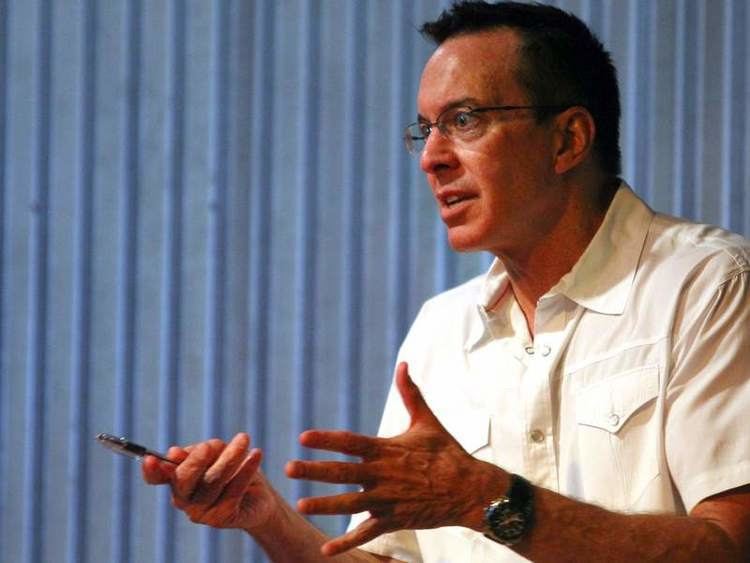Name Greg Sarris Role Writer | Movies Grand Avenue | |
 | ||
People also search for James Richard Giles, Daniel Sackheim, April Webster Books Mabel McKay, Watermelon nights, Keeping Slug Woman a, Grand Avenue, The Sound of Rattles and Clap | ||
Greg sarris speaks at bioneers conference
Gregory Michael Sarris (born February 12, 1952) is a writer and academic. Along with Sherman Alexie, Paula Gunn Allen, and Leslie Marmon Silko, Sarris is a notable contributor to the second wave of what literary critic Kenneth Lincoln has called the Native American Renaissance. Sarris’s best known work, Grand Avenue, is a collection of short stories about contemporary Native American life. Grand Avenue is a real place located in Santa Rosa’s South Park district and the stories are based on his own life. Sarris served as co-executive producer of the 1996 HBO miniseries adapted from Grand Avenue. The two part mini-series was shot entirely on location in Santa Rosa, California not far from where Sarris grew up.
Contents
- Greg sarris speaks at bioneers conference
- Get to know greg sarris greg sarris interview
- Childhood
- Education
- Career
- Ancestry
- Activism
- Published works
- Achievements
- References

Get to know greg sarris greg sarris interview
Childhood

Greg Sarris was adopted shortly after his birth by a middle-class white couple, George and Mary Sarris, who believed they could not have children. Shortly after, they conceived the first of three biological children, which complicated life at home with his alcoholic father. Sarris was frequently the target of his stepfather’s abuse. In an effort to keep him out of harm’s way, he was sent to live with various white and American Indian foster families. At the age of 12, Sarris met Pomo basket weaver Mabel McKay, who taught him about American Indian customs and tradition. According to Sarris, McKay’s guidance provided him with a sense of purpose.
Education

After graduating from Santa Rosa High School in 1970, Sarris attended Santa Rosa Junior College. In 1977 he graduated summa cum laude with a BA in English from UCLA. He went on to complete his graduate studies at Stanford University, earning a master's degree in creative writing in 1981 and a Ph.D. in Modern Thought and Literature in 1989.
Career

Ancestry

Greg Sarris’ mother, seventeen year old Mary Bernadette “Bunny” Hartman, of German, Jewish and Irish descent, came from a wealthy family. She was sent to Santa Rosa to deliver her child, which was not uncommon for unwed mothers at the time. She was inadvertently given the wrong blood type in a transfusion after giving birth, and died shortly thereafter. Sarris’ father was not named on the birth certificate. It wasn’t until the early 1980s as a graduate student at Stanford that Sarris learned Emilio Arthur Hilario, of Filipino, Miwok and Pomo descent, was his biological father. According to Sarris, he learned the identity of his great great grandparents from his grandfather, Emiliano Hilario. Hilario’s grandmother, Reinette Smith Sarragossa, was the daughter of Emily Stewart, a woman of mixed blood ancestry, and Tom Smith, a well-known healer of Pomo and Coastal Miwok blood. Official government records however, indicate that Sarris' maternal great great grandparents were Joseph Peter Stewart, a barber from Pennsylvania and Emily B. (Skanks) Stewart of Maine. Both were African-American. The family has been traced back to 1799.

Marilee Montgomery and Stop the Casino 101 Coalition dispute Sarris’s claim to have Pomo and Miwok blood. Sarris was at the forefront of the controversial Graton Resort and Casino project which was strongly opposed by Stop the Casino 101 Coalition.
Activism
In the early 1990s, Sarris worked to have the Coast Miwok and Pomo Native Americans gain recognition as a tribe. He co-authored the Graton Rancheria Restoration Act, 25 U.S.C. §1300n (Act) with California Indian Legal Services. President Clinton signed the Act into law on December 27, 2000, officially granting the tribe status as a federally recognized tribe. The Act mandated that the Secretary of the Interior take land in the tribe's aboriginal territory of Marin or Sonoma Counties into trust as the Tribe's reservation.
